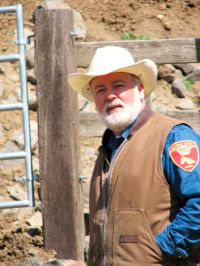 Farmers in several regions of the U.S. are discovering a new potential cash crop – camelina. Camelina is beginning to find favor with both the biofuels industry as a strong potential feedstock for biodiesel, as well as with farmers who are discovering they will be able to grow the crop profitably.
Farmers in several regions of the U.S. are discovering a new potential cash crop – camelina. Camelina is beginning to find favor with both the biofuels industry as a strong potential feedstock for biodiesel, as well as with farmers who are discovering they will be able to grow the crop profitably.
One such farmer is Steve Camp, whose farm is located in Lacrosse, Washington. He is working with researchers from Washington State University (WSU) to test the viability of camelina for biodiesel. This program is one element of a recent initiative known as the “Sustainable Aviation Fuels Northwest” project, a large scale effort to create biodiesel for use in aviation applications. Camp was featured in an article focusing on WSU’s research.
Camp began growing the crop in 2007 after visiting an oilseed rep who was encouraging farmers to test the crop. Last year, he crushed the camelina commercially and used it to run his tractor and pick-up. This past winter, he also pressed some of the camelina using a press from the U.S. Department of Agriculture’s Natural Resources Conservation Service and the result is waiting in storage to be converted to fuel.
Camp’s initial outlook is sunny on crop. “I feel good about the possibilities for camelina,” he said. “I am excited about this endeavor. I really see potential. I’ve got enough experience now to know that it does work.”
As part of Camp’s contribution to the research, he is testing when to plant and harvest the crop. Last year he planted it as a winter crop and got a better yield than his usual winter wheat. In response to his success, he has expanded his camelina acres from 50 to 200. On average, in 90 days, he yields between 1,100 to 1,200 pounds per acre as compare to an average yield of 900 pounds per acre of mustard or canola. He also uses less outputs then what he needs to use on a traditional crop, and he notes camelina’s sustainability benefits.
According to Camp, every 100 pounds of seed produces about 40 pounds or between 5 and 6 gallons of oil and about 63 gallons of biodiesel per acre. Although the economic benefits are still under review, many organizations and programs are paying farmers a guaranteed price for their camelina.
Regardless, Camp notes that growing camelina provides value beyond monetary profit.
“We need to look at more than just the bottom line,” he said. “It has to pay, yes, but even if you broke even, you’d be able to guarantee yourself your own fuel every year. You’d be your own supplier.”

